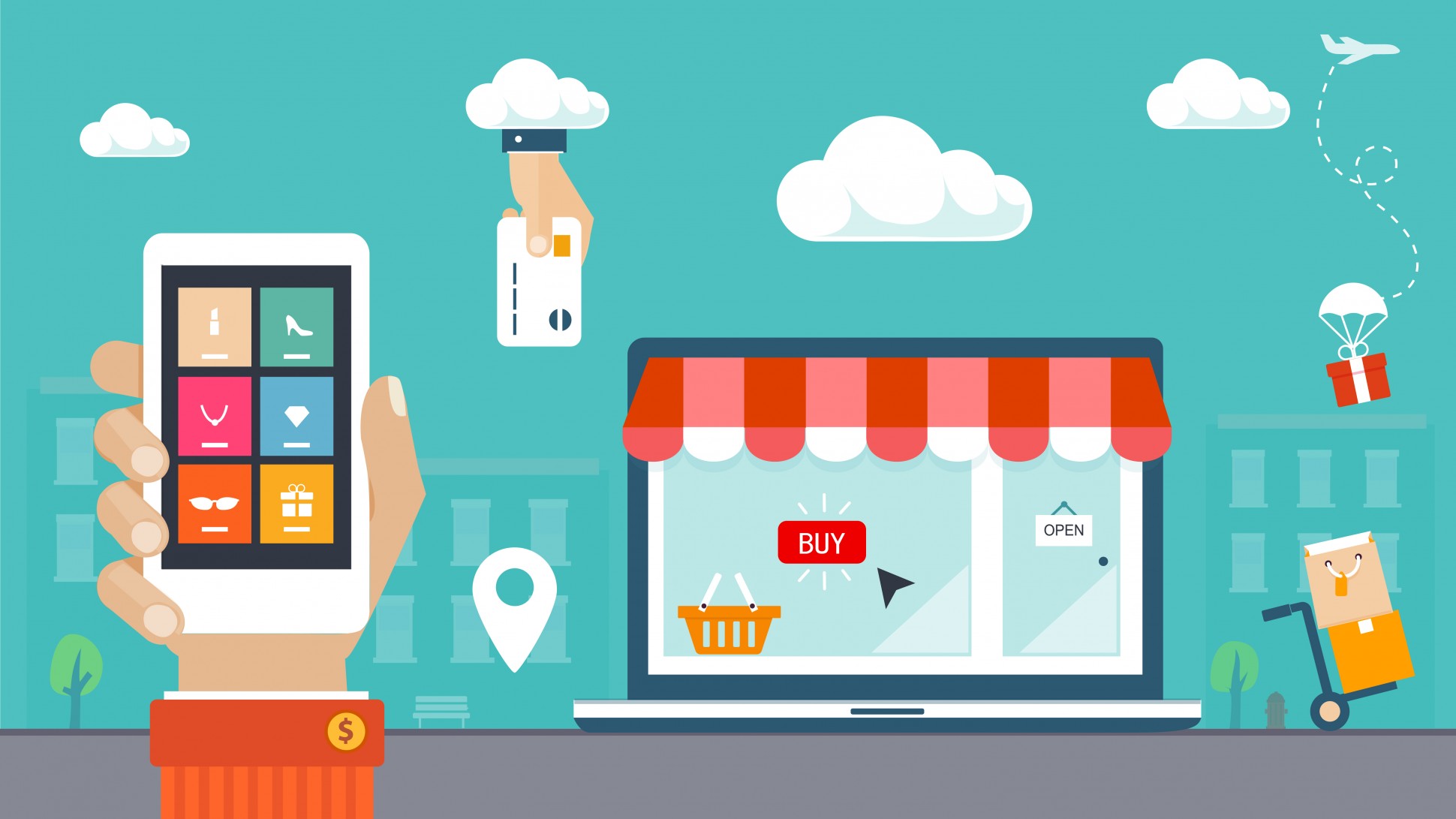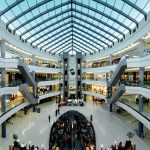A in-depth look at omnichannel retail strategies for Pop-Up Stores
One of the biggest trends in retail, and soon for Pop-Up Stores is, in fact, something most consumers aren’t even aware of. Known as “omnichannel,” it’s a new approach to retailing that is transforming the way that retailers do business.
For consumers, omnichannel means being able to shop anywhere and receive goods in the most convenient way possible, says Leslie Hand, vice president of IDC’s Retail Insights team. But for retailers, it’s a “single version of the truth” for items, orders and customers, allowing employees to deliver goods consistently no matter where they are in the system.
Omnichannel strategies make the days of buying and receiving products through different channels (online, brick and mortar or even mobile) a thing of the past. Now that retailers are finally integrating these channels, consumers can buy what they need and choose how they get it. The process is seamless to the consumer, but behind the scenes, it’s a massive shift in how retailers operate.
Accommodating consumer demand and enhancing the retail experience
One of the goals of omni-channel retail strategy is to accommodate consumer demand for detailed product information. This product information is vital to both retailers and consumers. Consumers collect information about products, and retailers collect information about their customers. There are differences between what online merchants and storefront retailers can offer in this regard. E-commerce retailers lack the ability to provide their customers with a physical product to examine, while brick-and-mortar stores fail to provide product recommendations based on previous purchases. Until now.
Surf Amazon, or even the site of a big box clothing retailer and sidebar recommendations of similar, potential purchases are ubiquitous. “You have a plaid shirt in your shopping cart. Other shoppers purchased these jeans as well.” Such notifications are instantaneous, continuous, and can be helpful. With this information a customer might be more likely to purchase something he might not have otherwise. At the very least the shopping experience feels personalized and intuitive.
The in-store process, however, lacks recommendations based on previous purchases. A pair of shoes is on sale, but will they match the red top she purchased earlier? The only way is to find the same top and bring it into the fitting room along with the shoes. But what if the shirt isn’t in stock? What if there is a better match on the rack, and the retailer is missing an upsell opportunity? In-store fitting room experiences are decidedly hectic and inefficient.
Unfortunately, retailers often overlook fitting rooms. It’s unfortunate because a bad fitting room experience can lead to missed sales and lower conversion rates. Alert Technology is a company that provides sensors and analytics for clothing retailers. Their data suggests a customer who uses a fitting room is 71% more likely to make a purchase than a customer who just browses the sales floor. Envision Retail, Ltd, of England, “retail performance specialists,” found shoppers who used fitting rooms converted to paying customers 67% of the time. They found just 10% of shoppers who only browse the sales floor made a purchase.
Clothing retailers, it appears, get this message. They are increasing the square footage of fitting areas. Others are amending their fitting rooms – brightening them, redesigning them, hiring more associates. Some have turned to a laundry list of technologies to improve the fitting room experience. Chief among them is the digital mirror.
MemoMi, a Palo Alto-based company, develops the MemoryMirror. MemoryMirror takes an 8-second video of a customer, and stores that video under a password-protected profile. The mirror stores a 360-degree view of each of the items a shopper tries on, so she can compare her current outfit to the others she’s tried on already. She can even send the outfits to her friends via email, for feedback. Neiman Marcus features MemoryMirrors in a few of their locations. MemoMi isn’t the only company working to bring a taste of virtual reality to the shopping experience.
Rebecca Minkoff is also experimenting with virtual shopping aides. They’ve partnered with eBay Enterprise to include “Connected Fitting Rooms” in some of their locations. These fitting rooms allow a shopper to check in via phone number upon entering a Rebecca Minkoff location. She may then browse a wall-sized virtual collection, and ask that certain items be sent to a fitting room. The fitting rooms are interactive. They allow the shopper to adjust the lighting, view other items that might fit well with the current piece, and ask for assistance from a store associate. The fitting rooms use Microsoft’s Kinect technology, and will also appear in select Bloomingdale’s locations as well as a number of other upscale clothing retailers.
MemoMi isn’t the only interactive mirror developer. Panasonic has also created a virtual retail-focused mirror. Geared more toward makeup and hair, Panasonic’s mirror allows customers to add varying facial hair or makeup styles to their visage. Their goal is to place virtual mirrors in places like department stores and salons. And mirrors aren’t the only way clothing retailers are persuading customers to make purchases.
Virtual fitting rooms and mirrors are relatively new, but some retailers have blended e-commerce with the in-store experience for years. Tesco, one of Britain’s largest retailers and grocers, has offered a Facebook-based virtual fitting room since 2012. Shoppers can upload a photo of themselves, and their body type or measurements. The Tesco app then develops a 3D model for how a shopper might look in a given outfit or garment.
Macy’s uses Bluetooth-enabled sensors to deliver product information to in-store customers. The retail giant can offer coupons, or videos with product information, to customers based on where a shopper is in the store. Lacoste offers an augmented reality app. Customers can virtually try on shoes by pointing their phones at their feet, and add interactive backgrounds under their feet. They can also take and share photos of apparel with friends via Facebook.
Whether through virtual mirrors or augmented reality apps, kiosks or robot helpers, retailers are looking for new ways to provide the ever-essential product information shoppers covet. It’s part of the omni-channel trend, in which brick-and-mortar retailers must adjust their shopping experience to provide customers a store with all the trappings of online recommendation engines. E-commerce companies open Pop-Up Stores to showcase physical inventory. Physical storefronts use technology to virtualize their fitting rooms and sales floors. Retailers must continue to blur the line between physical store and online presence to meet consumer demand.
Shopper desires for volumes of product information are driving leaps and bounds in e-commerce sales. In 2014 e-commerce was responsible for around 6% of all retail sales. Forrester Research believes online sales will account for nearly 10% of all retail sales – a $370 billion figure – by 2017. Especially as shoppers continue to avoid physical stores, traditional retailers must find ways to recoup sales lost to the Amazons of the world.
Changing the supply chain
The omnichannel shift essentially places the consumer and their individual preferences at the center of all transactions and processes related to those transactions. According to Hand, a key element in how omnichannel strategies are changing the retail business model is applying new approaches and technologies to managing the supply chain.
Hand says major retailers, such as Macy’s and Nordstrom, have taken pains over the past few years to have an umbrella view of where each item of merchandise is in real-time, whether in a store, warehouse or distribution center. “If I want to have the customer order online, pick up in store or if I want to ship from store, I need to have a much higher level of surety in my inventory numbers,” Hand says.
To do this, retailers are integrating things such as RFID tags on merchandise or mobile, tablet-based Point of Service systems from providers such as Samsung with back-end systems, allowing them to track the locations of items so if an item isn’t available from a distribution center, it can be shipped or picked up from a store. Unfortunately, Hand says, most retailers’ estimates of what’s in store can range anywhere from between 60 to 90 percent accuracy.
To solve this problem, retailers are turning to order orchestration providers such as OrderDynamics to get a big picture view of their merchandise. According to OrderDynamics’ President John Squire, the company uses information gathered across the entire business to enable retailers to see where money is being made or lost. “When you have hundreds or thousands of stores in the fleet, it’s a daunting supply chain equation to solve for. The technology needs to be there to fulfill that customer demand,” he says.
Using a cloud-based order management system, the company’s order orchestration and routing technology helps more than 60 retailers worldwide manage surges in demand that can’t be fulfilled by distribution centers, Squire says. For instance, the system has helped retailers such as home décor providers to pinpoint stores that have products and decide whether items can be shipped from those stores. The system looks at how well those stores have fulfilled orders in the past and whether they can meet the delivery deadline for the customer to help determine the best location from which to ship.
Retail Strategy Research analyst Nikki Baird says many luxury retailers are leading the pack in innovative approaches to omnichannel supply chain strategies. For instance, Baird says Michael Kors allows its customers to return handbags to a their store regardless of whether the bag was bought at the store, online or at another retail outlet such as a department store; the Kors store will take the return, no questions asked.
“They’re looking at it like it’s all our inventory, it’s all our brand, so it’s worth it for us to maybe take a hit in terms of taking back inventory…because in the long run the relationship with the consumer will pay the dividend,” Baird says.
Visibility across the supply chain also allows retailers to ship items that are less likely to sell based on location. For example, Baird says, if someone in Miami is looking for a particular swimsuit online, that item may actually be shipped to them from a store in Maine because there’s a higher likelihood that item may have to go on sale in Maine than at a store in Miami, where it might go for full price.
OrderDynamics’ Squire says they offer tools that can help make such decisions possible by pulling in information from across the business—marketing, purchasing, etc.—to provide the best data regarding how orders are fulfilled, down to the level of individual stores, products and orders and even individual customers. Decisions regarding fulfillment are then based on profit and prioritized action, he says.
To bridge the gap retailers must take the omni-channel philosophy to heart. Consumers prefer a retail experience that includes the advantages of search engines and price comparisons, product recommendations and customer reviews. It’s all part of shoppers’ desire for transparency and convenience surrounding products and product details. Transparency and convenience brick-and-mortar stores have trouble providing, especially compared with their online counterparts.
The bottom line is retailers would like to find a way to bring more customers through their shop doors by providing some of that transparency and convenience. As a result luxury brands are attempting to turn in-store shopping trips into an omni-channel experience. One way they’re adapting is through technology like MemoryMirror and connected fitting rooms. Will it work? The projects are new and the jury is out. But it’s a potential step in the right direction, and an intriguing storyline to follow, regardless of the outcome. Omni-channel is here to stay; are the customers?
- Pop Up 101: How To Design Your Pop-Up Store Layout - September 7, 2020
- 5 Reasons Why Your Brand Should Host a Holiday Pop-Up Store - December 10, 2017
- 4 Ways To Capitalize On The “Retail Crisis” in NYC - August 4, 2017






